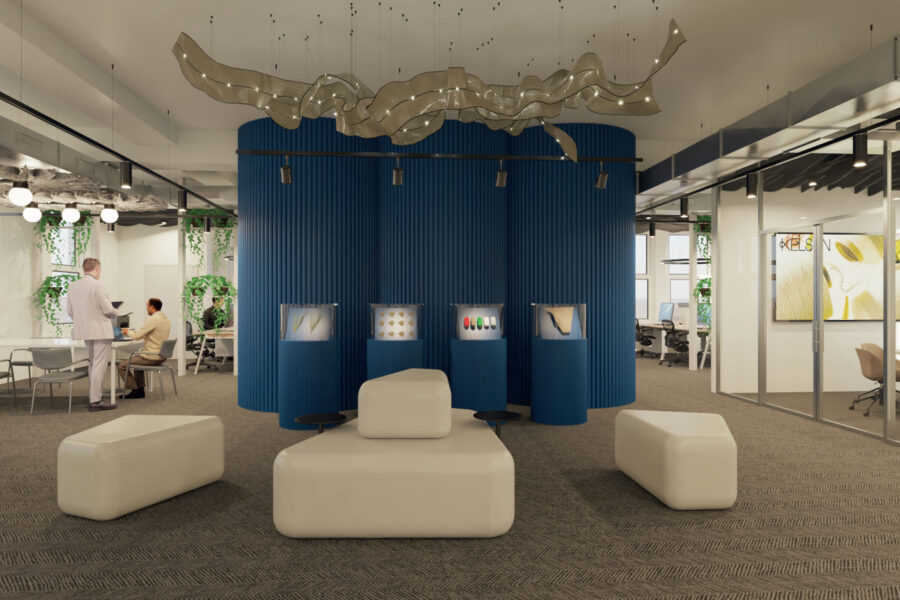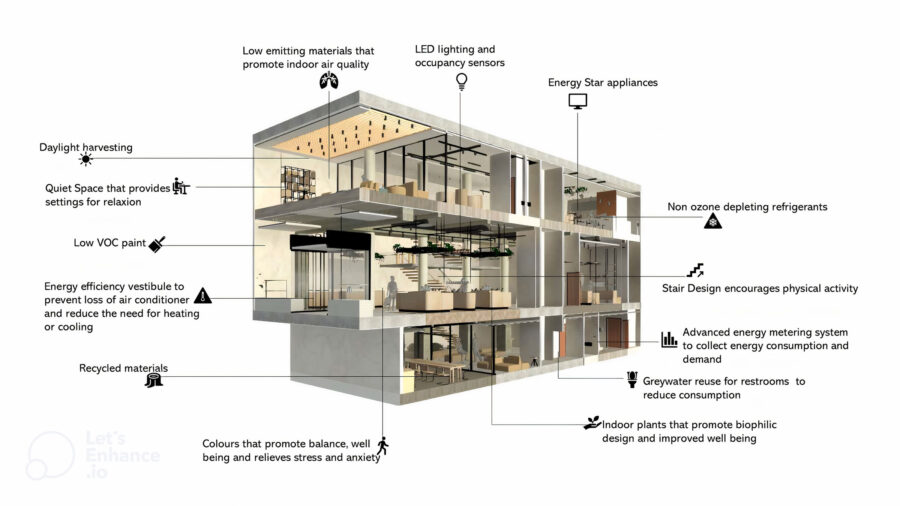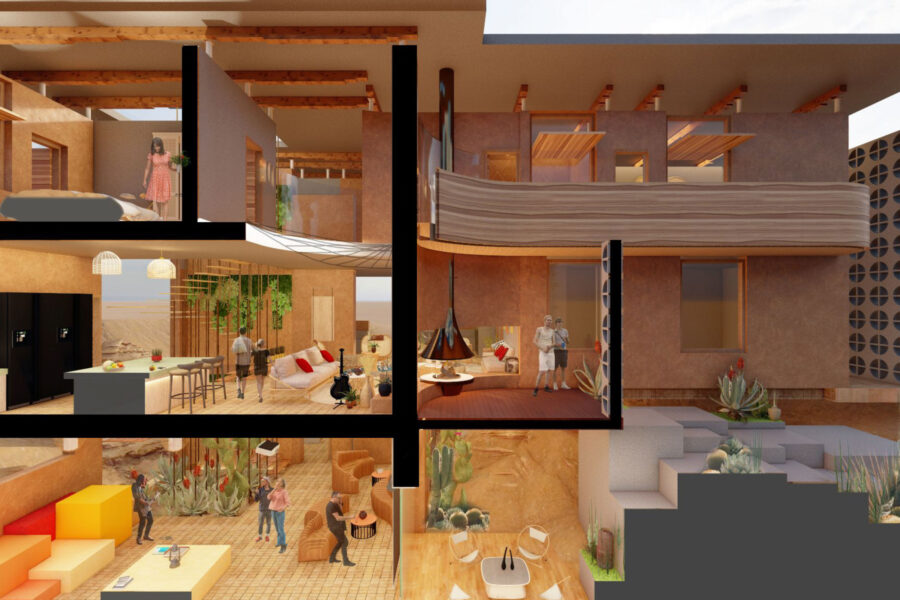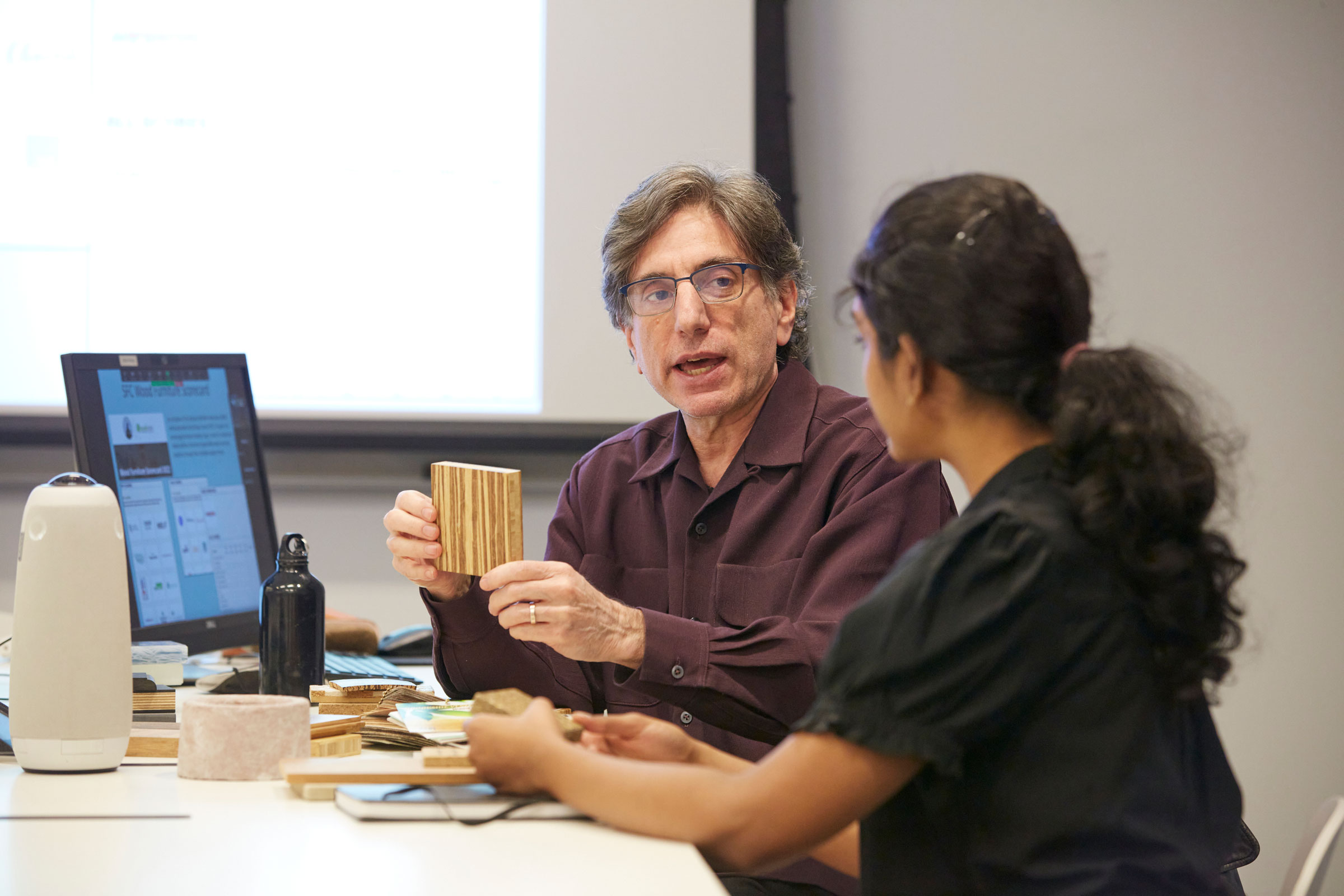Story at a glance:
- NYSID offers a one-year Master of Professional Studies in Sustainable (MPSS) Interior Environments program that prepares design professionals for leadership and sustainability roles.
- The school’s program launched in 2010 and integrates design with sustainability, focusing on human and planetary well-being and the practical application of sustainable interior design strategies.
- The program’s instructors, also design professionals in the field, teach students the principles of a closed-loop circular economy and decarbonization along with resilience and equity to apply to future design projects.
Sustainable interiors are in demand. Just take the global eco-friendly furniture market, for example. It was valued at $43.26 billion in 2022 and expected to expand at a compound annual growth rate of 8.6% from 2022 to 2030. From furniture and coverings to flooring and paint, the demand for healthy materials and solutions in projects isn’t going away anytime soon.
“Sustainability is such a critical aspect of our lives now, and as we dig more deeply into it, we can use our creativity to do more with a smaller environmental impact,” says Michael Woods, an architect with Perkins&Will.
Woods joined the faculty at the New York School of Interior Design (NYSID) in 2023 and currently teaches “Constructing, Operating and Maintaining Sustainable Interiors” as part of NYSID’s Master of Professional Studies in Sustainable (MPSS) Interior Environments program. The program emphasizes sustainability in interior design to graduate students—many of them already working in design fields. Woods’ class covers the process from construction documents through construction, operation, and post occupancy evaluation.
The MPSS is a post-professional program structured to prepare design professionals to assume leadership roles in developing and maintaining sustainable interior spaces. Classes are offered in the evenings and on weekends, and students can enroll full-time, part-time, or even study online with live synchronous video classes. Woods’ course meets once a week in the evenings, since some students work while they are in the program.
“Day to day I’m an architect with Perkins&Will in New York City, working primarily on commercial buildings and interiors. We recently completed a new office building at 799 Broadway in Greenwich Village where the emphasis was on well-being with healthy materials, reduced energy use, and access to large outdoor terraces. We achieved LEED Gold and Fitwel 2 star certifications, and the building has been very successful at attracting tenants interested in these features.”
He says NYSID has a unique program to focus on sustainable interiors, and the school’s location in New York City has a lot to offer students, with so many additional ways to learn about design. “As design professionals, we are looking for students with a broad understanding of design issues and the knowledge to incorporate these in our projects,” he says.
Expanding Knowledge

Project rendering developed by student Stefano Falez as part of the MPSS program. Image courtesy of NYSID
Woods says achieving truly sustainable interior design starts with systems thinking, and this master’s programming teaches just that. “This helps us see how all of these elements are dependent on each other. As we saw during the pandemic—social, economic, and environmental elements are all connected.”
Another instructor, Andrew Hathaway, has been teaching at NYSID for more than eight years. He is also a senior portfolio manager at Vidaris. Hathaway initially started working with NYSID more than a decade ago, as part of their sustainability advisory board. He’s also taught courses on mechanical system design, operations, and maintenance.
Grad students at NYSID typically take the two Sustainable Interior Design Process classes taught by Hathaway and Woods back to back, as the lessons build on one another. “I take them from pre-design through concept design, schematic design, and construction documents, and Michael picks up when we start building,” Hathaway says.
Both instructors have seen a lot more student interest in overall wellness and sustainability in recent years. New and young designers are enthusiastic about Environmental Product Declarations (EPDs), and they’re even getting into writing specifications, Woods says.
“In addition to the reading, videos, and lectures the students have assignments related to a commercial design studio project that they completed the previous semester. We review the LEED or other certification credits that the project would pursue and how the design would accomplish those,” Woods says. “The students write a few specification sections on sustainable features and develop a post occupancy evaluation questionnaire.”
He says students today want to go beyond the basics of sustainability and beyond what is required of LEED. As part of the MPSS program they go in-depth to learn about healthy building materials as well as those that are on the Red List, why that matters, and how that’s changing. “How are you specifying and being sure that the contractor will include these healthy materials, and how are you tracking that?” Woods asks. “LEED provides many ways of doing it, but you can go even further with the International Living Future Institute Living Building Challenge process or others.”
Healthy materials are a major push, Woods says, as is discussion of resiliency. “That’s a factor that may be overlooked, but there are certainly aspects about resilience that should be considered in our approach to interiors.”
Prepared for the Field

This informative project graphic showing sustainable design features was developed by student Linda Diaz as part of the MPSS program. Image courtesy of NYSID
Hathaway says most of the students have some work experience, but this focused programming at NYSID fills in the gaps. “I’ve been surprised at how interested they are in covering that gap and learning the skills they need when they’re actually working in the profession—as opposed to just the design,” he says.
Students get to dig into EPDs and Health Product Declarations (HPDs), for example, to understand how to evaluate a material selection based on a lot of new information. “That was something most recent graduates or others haven’t done at all unless they worked in a really small office,” Woods says. “Our students have really latched onto that and understood how important that part of the process is. This is a chance for them to see some other aspects of the work that they wouldn’t in a normal design studio or a typical classroom setting.”
This is a chance for them to see some other aspects of the work that they wouldn’t in a normal design studio or a typical classroom setting.
All students in the program have a previous degree in interior design or architecture, and Hathaway says this program takes them to the next level. “What I really think is special is the focus on giving the students the information and the skills they need when they go and actually work in an interior design firm, as opposed to just focusing on being good designers. We focus on how they’ll best integrate into that process when they get into a professional role.”
Woods says the lessons show how design, construction, and operations are all integrated in a way that they need to think about. “It’s not something that is applied later, but it’s something that’s an integral part of their thought process.”
During the courses students also explore environmental project management practices that support implementing green projects, sustainable procurement practices, issues of material conservation and waste management, post-occupancy evaluation, and so much more.
“Sustainability doesn’t end for the designer with the initial concepts,” Woods says. “For the design to be successful, it needs to be built, maintained, and occupied as intended. Everyone involved needs to follow through.”

Graduate students Sarah Espinosa and Madelyn Cichy developed this project section as part of their NYSID coursework. Image courtesy of NYSID

